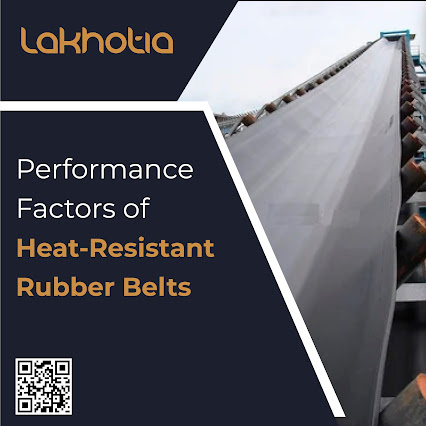Conveyor belt joint types and joining techniques
Conveyor belt joint types and joining techniques
Mechanical fasteners: Strength and DependabilityConveyor belt joining frequently uses mechanical fasteners because of its robustness and dependability. The belt ends are fastened securely with these fasteners, which are made of metal plates or hinges. To ensure a solid binding, the belt ends are lined up and put into the fastener before being tightened.
There are various benefits to using mechanical fasteners. Because of their remarkable joint strength, the conveyor belt can support large loads and severe strain.
They also require little effort to install or replace, which reduces downtime when performing maintenance.
Flexibility and Durability of Vulcanization
An additional common technique for connecting conveyor belts is hot vulcanization. In order to
vulcanize the belt ends together, vulcanizing presses are heated and compressed throughout this procedure. Excellent flexibility and durability make vulcanized joints ideal for a wide range of applications.
The belt ends are coated with a unique adhesive substance called the vulcanizing agent during the cold vulcanization process. The heat and pressure from the press create a chemical reaction that ties the ends together.
Instead of using a press, cold vulcanization joins the two belt ends together by means of a bonding agent that initiates a chemical reaction.
Long-lasting performance is ensured by the robust, seamless, and wear-resistant joint that results.
Precision and Versatility in Adhesive Bonding
Conveyor belts can be joined in a variety of ways with adhesive bonding, especially if the belts are lightweight and thermoplastic. It entails applying certain adhesives to the belt ends to form a solid bond.
Excellent precision is provided via adhesive bonding, which may be customized for particular belt materials and uses.
In order for the adhesive bond to be successful, the belt ends need to be cleaned and prepared correctly. After applying the adhesive to the belt ends, they are pushed together to allow the material to solidify and cure.
Because of the flexibility of adhesive bonding, the belt can continue to operate smoothly.
Investigating Types of Conveyor Belt Joints
The belt ends are coated with a unique adhesive substance called the vulcanizing agent during the cold vulcanization process. The heat and pressure from the press create a chemical reaction that ties the ends together.
Instead of using a press, cold vulcanization joins the two belt ends together by means of a bonding agent that initiates a chemical reaction.
Long-lasting performance is ensured by the robust, seamless, and wear-resistant joint that results.
Precision and Versatility in Adhesive Bonding
Conveyor belts can be joined in a variety of ways with adhesive bonding, especially if the belts are lightweight and thermoplastic. It entails applying certain adhesives to the belt ends to form a solid bond.
Excellent precision is provided via adhesive bonding, which may be customized for particular belt materials and uses.
In order for the adhesive bond to be successful, the belt ends need to be cleaned and prepared correctly. After applying the adhesive to the belt ends, they are pushed together to allow the material to solidify and cure.
Because of the flexibility of adhesive bonding, the belt can continue to operate smoothly.
Investigating Types of Conveyor Belt Joints
Butt Joint: Easy to Use and Reasonably Priced
One of the simplest and most affordable types of joints for conveyor belts is the butt joint. The belt ends must be aligned before being joined together with an adhesive bond, vulcanization, or mechanical fastening.
Butt joints are frequently utilized in sectors where lightweight goods are transported by low-tension conveyor belts.
Improved Strength and a Smooth Transition at the Overlap Joint
The finger joint, sometimes referred to as the overlap joint, provides increased strength and a seamless transition between the belt ends. It entails vulcanization, or the overlaying of the belt ends, and the use of both mechanical and adhesive fastening. For heavy-duty installations where the conveyor belts handle high loads, overlap joints are the preferable option.
Scarfed Joint: Strong and Seamless
Scarfed joints are made to ensure excellent strength and longevity by facilitating a smooth transition between the belt ends. For this kind of junction, the belt ends are beveled at a particular angle and bonded together via adhesive bonding or vulcanization. Scarfed joints are frequently utilized in situations where a continuous, smooth belt surface is required.
Recall that choosing the appropriate conveyor belt jointing technique and joint type increases productivity and safety in a variety of industrial sectors in addition to improving conveyor belt performance overall.


Comments
Post a Comment